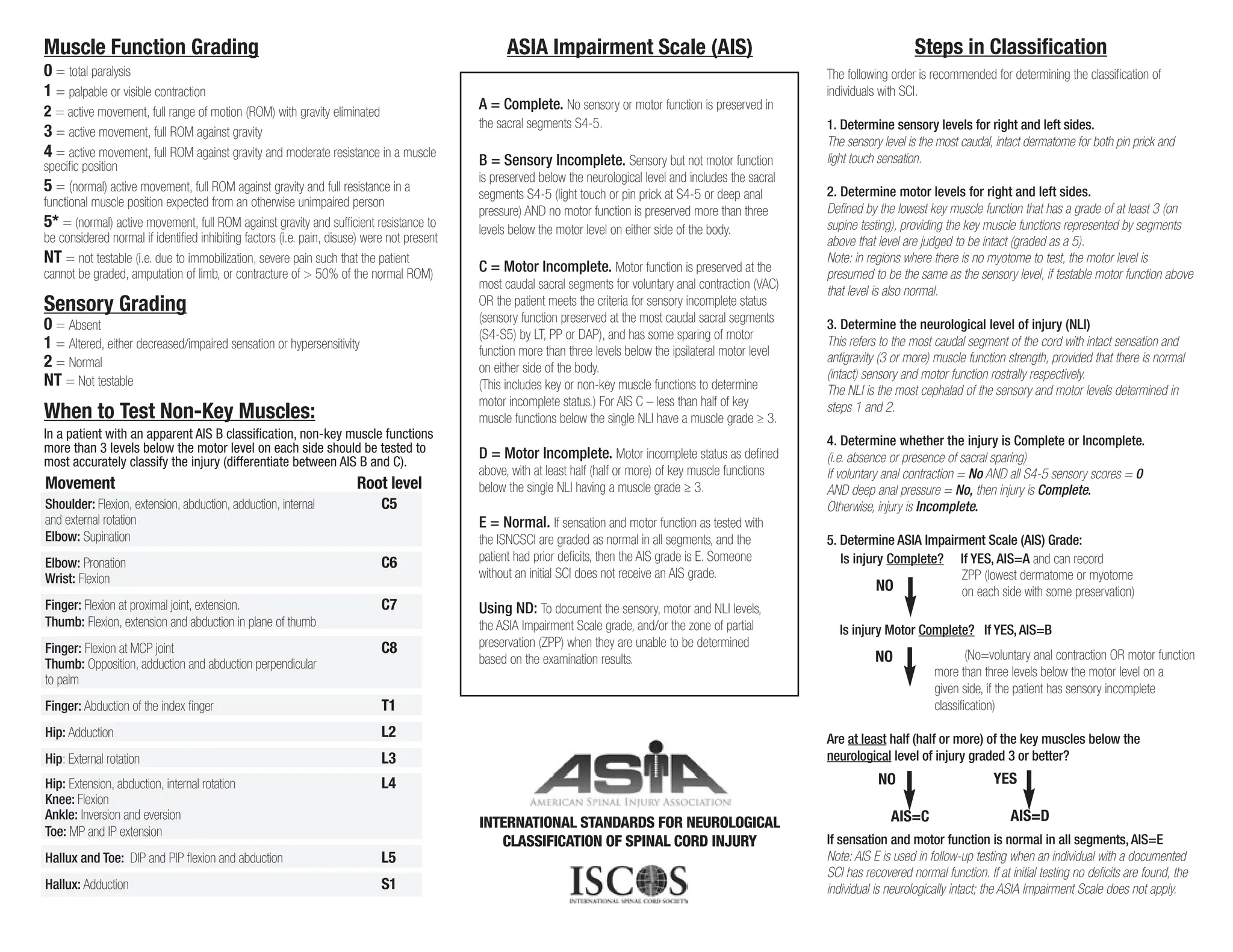The document outlines the standards for the neurological classification of spinal cord injury, detailing the methods for assessing sensory and motor levels to determine injury completeness and the Asia Impairment Scale (AIS). It includes specific muscle function grading and neurological level of injury (NLI) assessment procedures. Key elements include the classification criteria for sensory and motor function, along with the protocols for documenting findings during patient examinations.

